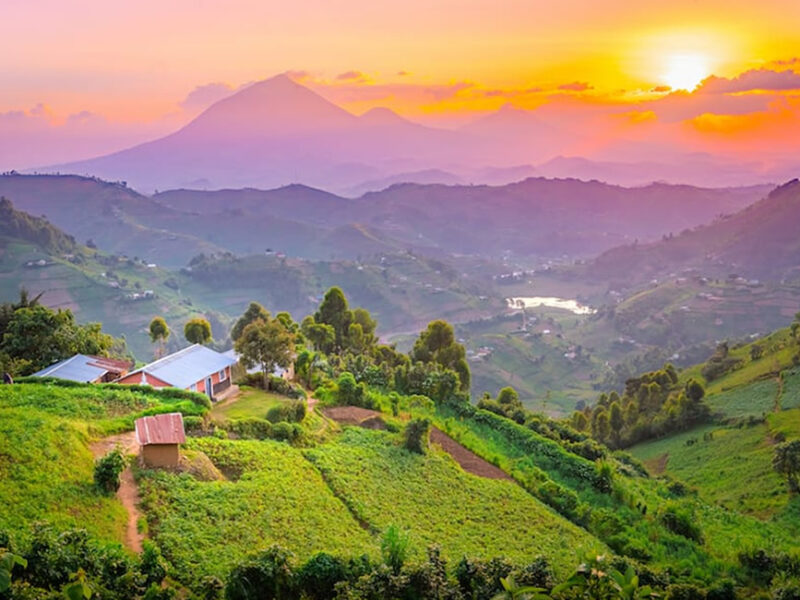Ice cap on Uganda’s Rwenzori splits: Global Warming blamed
The Rwenzori Mountains also known as “Mountains of the moon” are found a few kilo meters north of the Equator, rising over 4000meters above the floor of the Albertine Rift Valley, making it the highest mountain in Uganda, and the 3rd highest range in Africa. The region’s glaciers, waterfalls and lakes make it one of Africa’s most beautiful alpine areas.
The Rwenzori range has 6 major peaks, with Mt. Margherita being the highest (5109 m), followed by Mt Speke (4,890m), Mt Baker (4,843m), Mt Emin (4,798m), Mt Gessi (4,715m) and Mt Luigi di Savoia (4,627m). Mt. Margherita peak also called Mt Stanley complex is the highest peak and most popular with mountain climbers. To hike the great mountains you require a minimum of 7 days for a rewarding hike.
However, according to Dr Aryamanya Mugisha; NEMA Executive Director, the ice cap on Rwenzori Mountains of the Moon; one of the world’s most treasured mountains, is fast melting and could disappear within 4 Decades.
A recent report by the United National Environment Program proved that the glaciers on the mountain had declined by 50% between 1987 and 2003. The report further reveals that, a century ago the glaciers of the Rwenzori Mountains covered nearly 6.5 sq. km. If the glaciers continue to recede, as they have since 1906, they will be gone in the next 20-40 years.
The melting of the ice on one of the peaks of Rwenzori has largely been a result of climatic changes like global warming. The melting of the glaciers has also increased water flow into River Semliki, the natural boundary between Uganda and the DR Congo. The increase of Semiliki water volumes has enhanced the erosive power of the River, causing shifting of the river towards the over degraded banks in Rwebisengo.
The large flow of melting ice into River Semiliki has also affected the mountain’s vegetation and biodiversity through erosion, silting and degradation of the vegetation. The fast melting rate of the ice will also change the weather patterns in the Rwenzori region which have been generally cooler than most parts of the country.
Therefore if nothing is done by 2050, the whole ice will be no more and the country will have lost a tourism treasure because it is unique to have ice on the equator. The other tourism treasures to be lost include the extraordinary flora and fauna such as Buffalo, bushbuck, chimpanzee, Elephant, giant forest hog, and leopards. The Rwenzori is also home to 241 bird species of which 19 are endemic to the mountain. Several birds are limited to just a few forests along the Albertine rift, notably the Rwenzori Turaco and Malachite Sunbird. All these tourism attractions make Mt. Rwenzori one of the beautiful tourism destinations in Africa.
The only solution to save the Uganda’s Treasures in the Rwenzori mountain ranges is to ensure that livestock don’t go into the river and that the eroded areas should be re-vegetated (reforestation) and trees are not cut,” Said Sam Mapesa; UWA Director.

